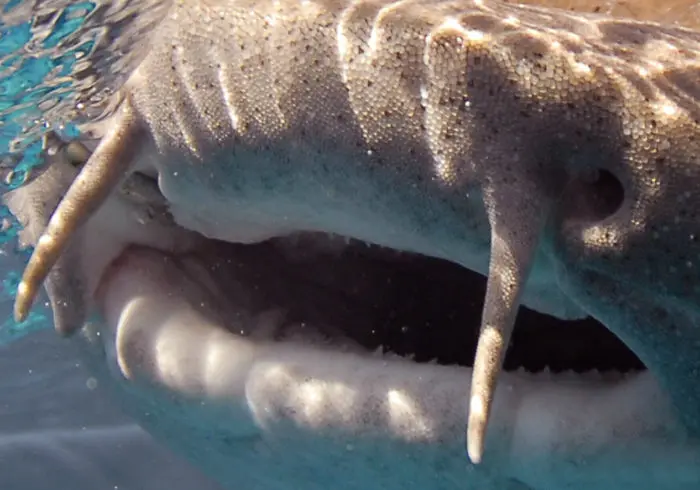It’s Hammerhead season here in Bimini (i.e the most wonderful time of the year). Great hammerheads are definitely the stars of the show, but they are not the only species of shark to visit the provisioning site. Nurse sharks are usually the first to appear, the last to leave and often times just waiting on the bottom as the boat pulls up. I have counted over 20 on this particular dive and while they can annoy the dive guides and divers, they are one of my favorite sharks.
“They are not real sharks.”
“They don’t count.”
“Don’t worry, they don’t have teeth.”
I have heard all of these statements in reference to nurse sharks and they are all false. I LOVE nurse sharks (so much so that I even wrote my first children’s book about them), so here are 5 of my favorite facts about them and some things to remember when you encounter them.
- Nurse sharks give birth to live young after a gestation period of 4.5-5 months. Fertilized nurse shark eggs hatch inside the mother, the egg cases are shed and several weeks later the live young are born. The pups (baby sharks are called pups) are about 11 inches (28 cm) in long when they are born and are covered with spots (SO CUTE). The markings on the neonates are believed to act as camouflage, helping them hide from predators like Goliath groupers and other sharks.

- Nurse sharks do have teeth, but they are not large or shaped like the traditional shark tooth. Instead, they have hard plates and teeth that look like the tip of a pencil. This is ideal for crushing and grinding things like conch or lobster (not a bad diet). A nurse shark can suck a conch right out its shell and this suction has been said to be the equivalent of 10 vacuum cleaners.

- You have probably heard people say sharks have to swim to breathe and with some species this is true. Nurse sharks, however, can buccal pump, sucking water into their mouth and forcing it over their gills. They do not have to swim to breath and more often than not are seen resting on the bottom.
- Nurse sharks are often seen piled up together in their version of a social network. This occurs in both juveniles and adults and these “slumber parties” can include upwards of 40 sharks. They even have favorite spots to host these social events.

- Sharks are not dumb animals and nurse sharks have actually been taught to perform a range of skills, highlighting their level of intelligence. Eugenie Clark did feeing experiments in the 1950s and taught the sharks to respond to a bell and found that they could remember the task even after several months of not being exposed to it. At Compass Cay in The Bahamas, the nurse sharks have learned to swim up to a submerged platform to receive food when someone makes a banging noise on the dock.
Diving with nurse sharks
Nurse sharks are one of the most common species found throughout Florida and the Caribbean. The shape of the head and body make them fairly easy to distinguish from other sharks and if you spend a lot of time in the ocean in this region, you’ve probably seen one. If you have seen one, it was most likely resting on the bottom or under a coral ledge. They are a lot of fun to dive with and photograph because you can get quite close. For some people, the ability to get close and the docile nature of these sharks creates inspires the need to touch, grab or wrestle them. Would you like to be dragged out of bed by a stranger?
For most of us, the answer is a hard no and this applies to nurse sharks as well. Get close and take pics, but please remember they are wild animals and they deserve our respect.

